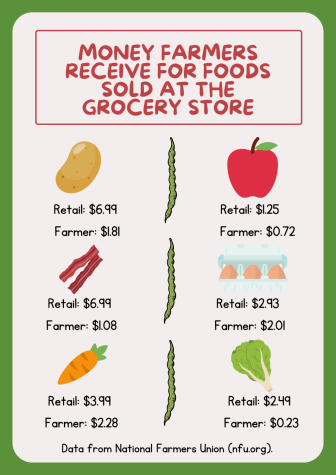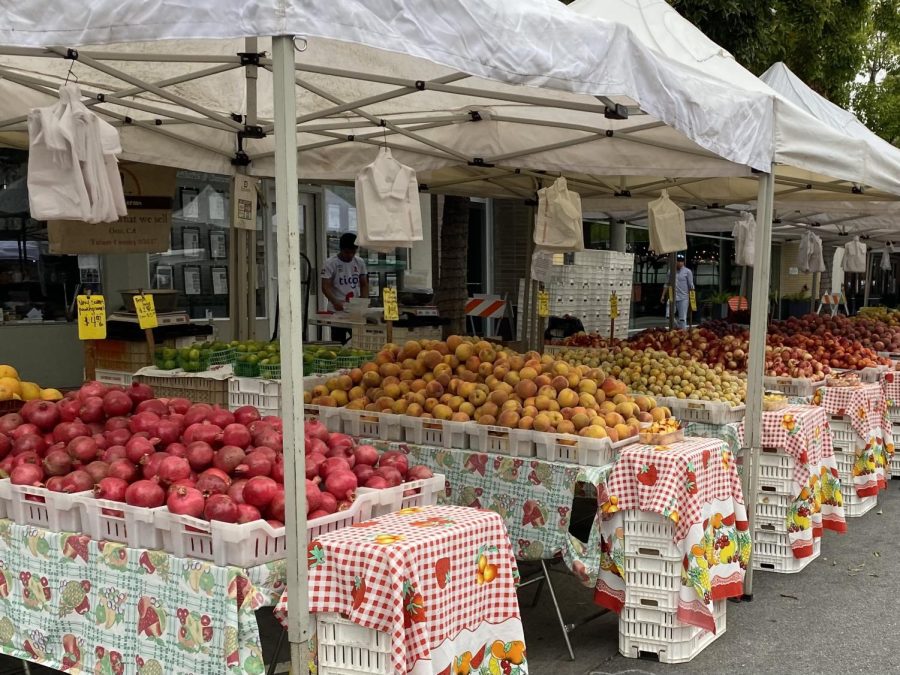“Super sweet, super sweet, step right up and get your berries,” calls out a farmer. A woman hears the chant and walks over to the stand to buy berries.
After buying a carton of strawberries, she continues on through the farmers market, buying food and goods from more vendors.
Many shoppers at farmers markets look forward to getting fresh produce from the market every week.
“I think why people like the market has to do with the freshness,” said Wendy Schettino, the San Carlos Farmers’ Market’s coordinator.
Additionally, vendors look forward to markets as a way to sell produce because they get to talk directly with their customers.
“You’re selling directly to customers rather than to wholesale or restaurants. So it gives you the most direct path from the farm to the customer. I would say it is the best way to sell your vegetables,” said Malena Nick, a farmers market worker at Blue House Farm.
Bay Area farmers markets are widely popular among buyers and sellers, as they create the opportunity to buy and sell an abundance of goods. College of San Mateo’s Farmers Market, one of the biggest farmers markets in the area, has over 95 vendors and gets anywhere from 3,500 to 6,000 customers on Saturdays.
“It is a direct connection between the people growing the food, purchasing it, and producing it without that middle man, and I appreciate that,” said Denise Dreyer, a shopper at the College of San Mateo Farmers Market.
Farmers markets have been popular throughout California for over a hundred years, and have continued to become increasingly popular throughout the past decade. Because of the continuous growth of markets, it’s often overlooked that farmers markets were on a decline in the mid-1900s.
During the mid-20th century, California created regulations that made it difficult for farmers to sell their produce at farmers markets. Small farms had to follow the same rules and regulations as the big farm corporations who shipped their produce nationwide.
This created a problem for small farms because they were unable to afford to follow the strict regulations created for large corporations. Many of the regulations created were unnecessary for small farms to follow because they weren’t shipping their produce long distances and selling their products on a large scale.
Small farms wanted to sell their food without having to abide by regulations regarding minimum size, labeling, standard packaging, and container requirements that were unnecessary and for them to follow.
A few years later in 1977, Governor Brown listened to what many small farms had to say and issued an executive order ending the regulations previously created. With the new order, California farmers still have to follow quality standards established by marketing orders but don’t have to follow rules created for big corporations.
Since then, farmers markets have flourished, and farmers and consumers have continued to flock to the markets throughout California. As of 2022, there are over 700 farmers markets scattered throughout the state.
The ability for small farms to sell produce again was important because many small farms greatly rely on farmers markets for their business. Now, there are some farms, like Medina Farms, that solely sell at farmers markets as a source of income.
“Coming to the farmers market is really important, this is what we live out of, all we do is farmers markets,” said Medina Farms worker Jamie Medina.

Even if a farm doesn’t exclusively sell at markets, they may still heavily depend on them because of the large difference in profit they get compared to when their products sell at grocery stores. According to the U.S. Department of Agriculture, farmers only make 16 cents for every dollar of food sold at a grocery store. Between the costs of production, packaging, food service, and more, farms aren’t left with much profit from products sold to grocery stores.
As well as supporting farms, customers find markets to be important for shopping sustainably and buying good produce.
“I like going to the farmers market because I enjoy the fresh produce and supporting local businesses,” said Jenna Young, a Carlmont student.
All of the goods bought and sold at farmers markets have been locally grown or made, so the carbon footprint of buying at markets is significantly lower than the footprint of a grocery store.
Additionally, all of the food bought and sold at markets is grown within a couple of hours of driving distance from its location. Comparatively, at big grocery stores, it is common to see produce from hundreds of miles away, or even from other countries. According to Climate Central, more than 60% of vendors travel fewer than 20 miles to get to farmers markets.
Along with markets being close for vendors, they are also often close by for their consumers. Many people shopping at the farmers market on the weekend recall it being a good time to socialize while getting food.
“The produce and other prepared foods are yummy, there is a wide variety and they are good quality,” Dreyer said. “The farmers market is sort of an event on Saturday mornings, usually I come with a friend or a relative.”
The reasons people go to farmers markets vary, but most customers can unite in their love for these local markets.
“I think it’s hard to find somebody who doesn’t enjoy a farmers market,” Schenitto said.
































